Photo
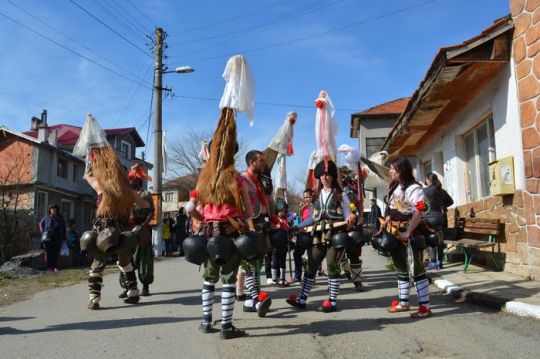
A Tranquil Journey to Avrat-Alan
Refreshing Change of Pace
The journey to Avrat-Alan on horseback offered a welcome reprieve from the jolting discomforts of a Turkish carriage traversing uneven roads. As we ascended into the mountains, a refreshing coolness enveloped us, accompanied by the inviting embrace of dense woodland canopies that provided respite from the relentless sun.
Idyllic Surroundings
Nature’s symphony unfolded around us, with bubbling streams emerging playfully from hidden nooks, reminiscent of joyful children rushing into the arms of their mothers. We found ourselves lingering leisurely in grassy clearings, where our horses indulged in the lush greenery, their contentment compelling us to delay our journey Private Guide Turkey.
Scenic Vistas
Upon reaching the summit of the foothills of the Balkans, we were treated to a breathtaking panorama. Stretching before us lay the vast expanse of the Maritza valley, home to Tatar Bazardjik, Philippopolis, and Adrianople. The eye wandered over miles of undulating plains, culminating in the majestic sweep of the Balkan foothills, delineating the boundary between the Maritza River and the Aegean Sea.
A Journey of Tranquility
Our horseback journey to Avrat-Alan not only provided a serene escape from the clamor of civilization but also bestowed upon us the gift of unparalleled natural beauty. Amidst the tranquil embrace of mountain breezes and verdant forests, we found solace and rejuvenation, cherishing each moment of our leisurely expedition.
0 notes
Photo
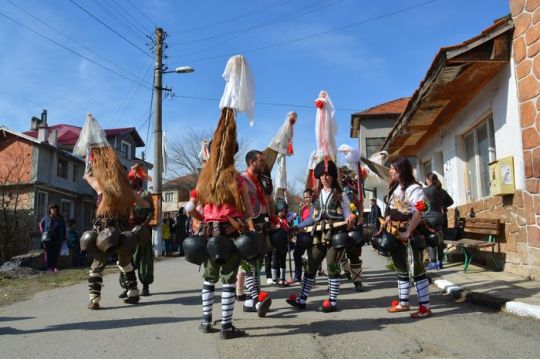
A Tranquil Journey to Avrat-Alan
Refreshing Change of Pace
The journey to Avrat-Alan on horseback offered a welcome reprieve from the jolting discomforts of a Turkish carriage traversing uneven roads. As we ascended into the mountains, a refreshing coolness enveloped us, accompanied by the inviting embrace of dense woodland canopies that provided respite from the relentless sun.
Idyllic Surroundings
Nature’s symphony unfolded around us, with bubbling streams emerging playfully from hidden nooks, reminiscent of joyful children rushing into the arms of their mothers. We found ourselves lingering leisurely in grassy clearings, where our horses indulged in the lush greenery, their contentment compelling us to delay our journey Private Guide Turkey.
Scenic Vistas
Upon reaching the summit of the foothills of the Balkans, we were treated to a breathtaking panorama. Stretching before us lay the vast expanse of the Maritza valley, home to Tatar Bazardjik, Philippopolis, and Adrianople. The eye wandered over miles of undulating plains, culminating in the majestic sweep of the Balkan foothills, delineating the boundary between the Maritza River and the Aegean Sea.
A Journey of Tranquility
Our horseback journey to Avrat-Alan not only provided a serene escape from the clamor of civilization but also bestowed upon us the gift of unparalleled natural beauty. Amidst the tranquil embrace of mountain breezes and verdant forests, we found solace and rejuvenation, cherishing each moment of our leisurely expedition.
0 notes
Photo
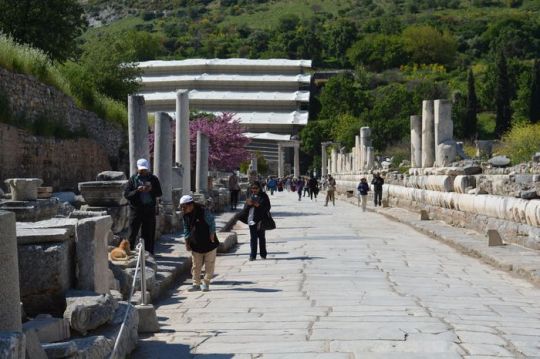
Final Rituals and Prayer
The religious staff, along with the Palace’s Imam and the Sultan’s Imam, conducted the final rituals under the Harem’s supervision. After prayers, they lifted the coffin and placed it temporarily on a stone, while muezzins chanted “Allahu Ekber” (God is most great).
Procession to the Middle Gate
The Sheikhulislam, Kaymakam Pasha, the Admiral, and other officials gathered at the ritual site. Sultan Selim III saluted the funeral before the audience hall’s door. Then, high officials carried the coffin to the Middle Gate.
Transition to the Old Harberdiers
At the Middle Gate, the old harberdiers took over the coffin’s carriage. The Sheikhulislam, Kaymakam Pasha, and the Admiral wore ceremonial attire, while others dressed either in ceremonial furs or ordinary clothes Istanbul Fun Tours.
Traditional Attire
Despite the tradition dictating official attire for procession participants, some wore ordinary clothes, as evidenced by historical accounts.
Inclusion of Officials
High officials, including the Governor of Istanbul, joined the procession, along with some learned men and individuals from the Medresse.
Burial and Final Respects
Following the burial at the Noble Tomb, Kaymakam Pasha, after attending prayers and paying respects, arranged for the deceased’s final resting place with the assistance of the Harem’s chief black eunuch.
This account portrays the ceremonial customs and protocols observed during the funeral procession of Sultan Abdulhamit I, emphasizing the participation of various high officials and the meticulous attention to traditional attire.
0 notes
Photo

Final Rituals and Prayer
The religious staff, along with the Palace’s Imam and the Sultan’s Imam, conducted the final rituals under the Harem’s supervision. After prayers, they lifted the coffin and placed it temporarily on a stone, while muezzins chanted “Allahu Ekber” (God is most great).
Procession to the Middle Gate
The Sheikhulislam, Kaymakam Pasha, the Admiral, and other officials gathered at the ritual site. Sultan Selim III saluted the funeral before the audience hall’s door. Then, high officials carried the coffin to the Middle Gate.
Transition to the Old Harberdiers
At the Middle Gate, the old harberdiers took over the coffin’s carriage. The Sheikhulislam, Kaymakam Pasha, and the Admiral wore ceremonial attire, while others dressed either in ceremonial furs or ordinary clothes Istanbul Fun Tours.
Traditional Attire
Despite the tradition dictating official attire for procession participants, some wore ordinary clothes, as evidenced by historical accounts.
Inclusion of Officials
High officials, including the Governor of Istanbul, joined the procession, along with some learned men and individuals from the Medresse.
Burial and Final Respects
Following the burial at the Noble Tomb, Kaymakam Pasha, after attending prayers and paying respects, arranged for the deceased’s final resting place with the assistance of the Harem’s chief black eunuch.
This account portrays the ceremonial customs and protocols observed during the funeral procession of Sultan Abdulhamit I, emphasizing the participation of various high officials and the meticulous attention to traditional attire.
0 notes
Photo
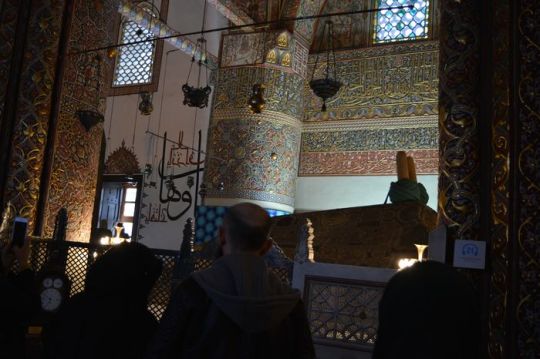
The Unfolding of Conflict Arrival of Hafiz Pacha
Initial Events of the Rising
The uprising began on May 2nd, gaining momentum until the arrival of Hafiz Pacha on the 12th. Hafiz Pacha’s forces consisted of a regiment of regular troops, a few artillery pieces, and numerous Bashi-Bazouks. The insurgents, numbering around 250, were armed with muskets, rifles, knives, or pistols, with a majority lacking proper firearms.
Attempted Resistance
A group of 150 well-armed men positioned themselves on one road leading to Tatar-Bazardjik, while another 100 were stationed on a different road. However, lacking intelligence on the approaching army’s route, they failed to effectively strategize. When Hafiz Pacha’s forces arrived, only 100 men confronted them, but they quickly retreated upon witnessing the overwhelming enemy numbers. Notably, they did not even manage to fire their weapons, resulting in no casualties among the Turkish forces Bulgaria Tours.
Panic and Flight of Inhabitants
Meanwhile, the panic-stricken inhabitants attempted to flee, but the town was already encircled by enemy forces. Attempts to escape were met with resistance or violence, leading to chaos and confusion among the population. Additionally, residents from neighboring villages, fearful of the advancing Bashi-Bazouks, sought refuge in the town, further adding to the tumultuous situation.
Bombardment and Carnage
Despite the cessation of resistance, Hafiz Pacha chose to initiate a bombardment of the town without offering terms of surrender. The indiscriminate shelling caused havoc among the crowds of terrified women and children who filled the streets. The bombardment continued until midnight, inflicting untold suffering and devastation on the defenseless populace.
Transition to Direct Assault
Following the bombardment, the clamor of war subsided, signaling the transition to direct combat. The ruthless tactics employed by Hafiz Pacha and his forces demonstrated a disregard for civilian lives and a willingness to resort to extreme measures to quell the uprising.
The arrival of Hafiz Pacha marked a turning point in the conflict, with the indiscriminate bombardment of the town symbolizing the brutality of the suppression efforts. The events depicted highlight the tragic consequences of armed conflict, particularly for innocent civilians caught in the crossfire.
0 notes
Photo
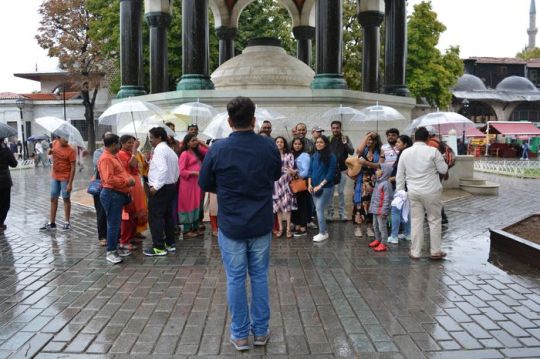
Broken Promises and Ongoing Hardships
A Grim Reality
In the aftermath of the devastation inflicted upon Raddovo, the challenges facing its inhabitants loom large. Once home to thriving families, the village now lies in ruins, its once bustling streets reduced to rubble. The return of its people brings not relief, but a daunting reality of destitution and despair.
Lost Livelihoods
The loss of livestock strikes a crippling blow to the community’s livelihoods. Out of approximately 320 pairs of oxen that once toiled in the fields, a mere thirty-three pairs have been returned. Such a paltry number is wholly insufficient for the monumental task of harvesting crops and securing sustenance for the coming winter Guided Turkey Tours .
Bleak Prospects
With the onset of winter fast approaching, the prospects for Raddovo’s residents grow increasingly dire. Without the means to gather their harvests or rebuild their shattered homes, they face the specter of destitution. The promises of assistance from Turkish authorities ring hollow in the face of stark reality, as aid fails to materialize and assurances prove empty.
Broken Promises
The assurances of help and support from Turkish authorities appear to be little more than empty gestures, designed to placate European scrutiny. Despite promises of livestock restoration and assistance in reconstruction, the villagers find themselves abandoned to their fate. Instead of aid, they are met with the cruel demand for tax payments, a bitter irony in the wake of their suffering.
A Desperate Situation
The imposition of hefty taxes on a community ravaged by violence and loss is a cruel injustice. The burden of such demands weighs heavily on the shoulders of Raddovo’s residents, pushing them further into the depths of poverty and despair. Faced with insurmountable obstacles and broken promises, their future grows increasingly uncertain.
As Raddovo grapples with the aftermath of tragedy, its people endure a harsh reality of hardship and abandonment. Despite their resilience, the road to recovery appears long and fraught with challenges. In the face of adversity, they cling to hope, but their plight serves as a stark reminder of the injustices that persist in the wake of conflict.
0 notes
Photo
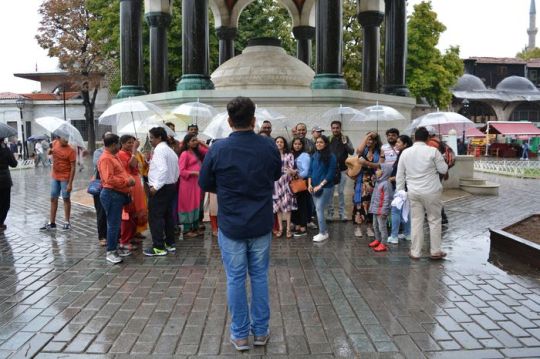
Broken Promises and Ongoing Hardships
A Grim Reality
In the aftermath of the devastation inflicted upon Raddovo, the challenges facing its inhabitants loom large. Once home to thriving families, the village now lies in ruins, its once bustling streets reduced to rubble. The return of its people brings not relief, but a daunting reality of destitution and despair.
Lost Livelihoods
The loss of livestock strikes a crippling blow to the community’s livelihoods. Out of approximately 320 pairs of oxen that once toiled in the fields, a mere thirty-three pairs have been returned. Such a paltry number is wholly insufficient for the monumental task of harvesting crops and securing sustenance for the coming winter Guided Turkey Tours .
Bleak Prospects
With the onset of winter fast approaching, the prospects for Raddovo’s residents grow increasingly dire. Without the means to gather their harvests or rebuild their shattered homes, they face the specter of destitution. The promises of assistance from Turkish authorities ring hollow in the face of stark reality, as aid fails to materialize and assurances prove empty.
Broken Promises
The assurances of help and support from Turkish authorities appear to be little more than empty gestures, designed to placate European scrutiny. Despite promises of livestock restoration and assistance in reconstruction, the villagers find themselves abandoned to their fate. Instead of aid, they are met with the cruel demand for tax payments, a bitter irony in the wake of their suffering.
A Desperate Situation
The imposition of hefty taxes on a community ravaged by violence and loss is a cruel injustice. The burden of such demands weighs heavily on the shoulders of Raddovo’s residents, pushing them further into the depths of poverty and despair. Faced with insurmountable obstacles and broken promises, their future grows increasingly uncertain.
As Raddovo grapples with the aftermath of tragedy, its people endure a harsh reality of hardship and abandonment. Despite their resilience, the road to recovery appears long and fraught with challenges. In the face of adversity, they cling to hope, but their plight serves as a stark reminder of the injustices that persist in the wake of conflict.
0 notes
Photo
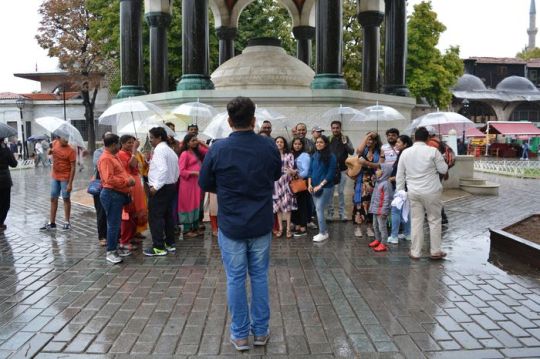
Broken Promises and Ongoing Hardships
A Grim Reality
In the aftermath of the devastation inflicted upon Raddovo, the challenges facing its inhabitants loom large. Once home to thriving families, the village now lies in ruins, its once bustling streets reduced to rubble. The return of its people brings not relief, but a daunting reality of destitution and despair.
Lost Livelihoods
The loss of livestock strikes a crippling blow to the community’s livelihoods. Out of approximately 320 pairs of oxen that once toiled in the fields, a mere thirty-three pairs have been returned. Such a paltry number is wholly insufficient for the monumental task of harvesting crops and securing sustenance for the coming winter Guided Turkey Tours .
Bleak Prospects
With the onset of winter fast approaching, the prospects for Raddovo’s residents grow increasingly dire. Without the means to gather their harvests or rebuild their shattered homes, they face the specter of destitution. The promises of assistance from Turkish authorities ring hollow in the face of stark reality, as aid fails to materialize and assurances prove empty.
Broken Promises
The assurances of help and support from Turkish authorities appear to be little more than empty gestures, designed to placate European scrutiny. Despite promises of livestock restoration and assistance in reconstruction, the villagers find themselves abandoned to their fate. Instead of aid, they are met with the cruel demand for tax payments, a bitter irony in the wake of their suffering.
A Desperate Situation
The imposition of hefty taxes on a community ravaged by violence and loss is a cruel injustice. The burden of such demands weighs heavily on the shoulders of Raddovo’s residents, pushing them further into the depths of poverty and despair. Faced with insurmountable obstacles and broken promises, their future grows increasingly uncertain.
As Raddovo grapples with the aftermath of tragedy, its people endure a harsh reality of hardship and abandonment. Despite their resilience, the road to recovery appears long and fraught with challenges. In the face of adversity, they cling to hope, but their plight serves as a stark reminder of the injustices that persist in the wake of conflict.
0 notes
Photo
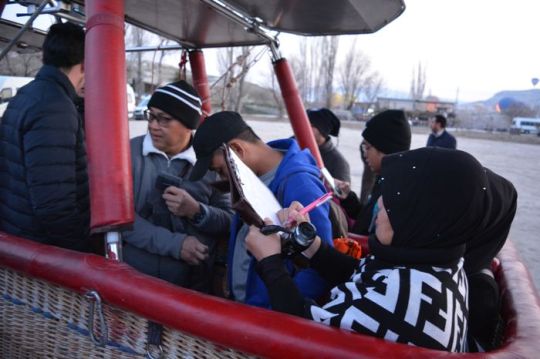
Bulgarian Economic Plans 1958-1980
Transition and Consolidation (1958-1960)
The Third Five Year Plan, spanning 1958-1960, marked the onset of the “great leap forward,” inspired by the Chinese Communists. However, this plan was interrupted in 1960 and seamlessly merged into the subsequent “Fourth” Five Year Plan to align with the General Perspective Twenty Year Plan envisioned by the Eighth Congress of the Bulgarian Communist Party.
A pivotal development during this period was Todor Zhivkov’s 1959 “Thesis,” outlining the theoretical phases of socialism progressing into communism. The initial phase of the Third Plan witnessed the “consolidation” of collective farms (TKZS), reducing their number from 3,290 to 972. An extensive reorganization, mirroring Chinese communes, took place with new administrative districts. Agricultural reforms included a modern inventory with 40,000 tractors and 8,000 combines. A 650-million-ruble Soviet loan was secured on the brink of the Fourth Plan.
Fourth Five Year Plan (1961-1965)
The Fourth Five Year Plan (1961-1965) aligned with the directives of the General Perspective (1961-1980). Key goals included boosting industrial production, machine construction, chemical output, agriculture, livestock breeding, electric power, and steel. The plan aimed to meet consumer demands in food production and light industry. The ambitious vision called for accelerated production, surpassing other “people’s democracies” to achieve comparable economic development by 1980. This implied additional efforts and sacrifices from workers and peasants Guided Istanbul Tour.
General Perspective Plan (1961-1980)
The overarching goals of the General Perspective Plan (1961-1980) included complete nationalization across all economic sectors and erasing distinctions between industrial and agricultural labor forces. The plan aimed to eliminate differences in qualifications, workload, and urban-rural labor. The ultimate objective was to progress from the Socialist principle of distribution (“from everyone according to his ability, to everyone according to his labor”) to the Communist principle (“from everyone according to his ability, to everyone according to his needs”).
Communist planners envisioned economic integration within the Council for Mutual Economic Assistance (COMECON) by 1980. However, achieving this integration would demand more intense exploitation, potentially worsening labor conditions and delaying improvements in the working class’s living standards. These were the vital economic development guidelines set forth by the Eighth Congress of the Bulgarian Communist Party for the future.
0 notes
Photo
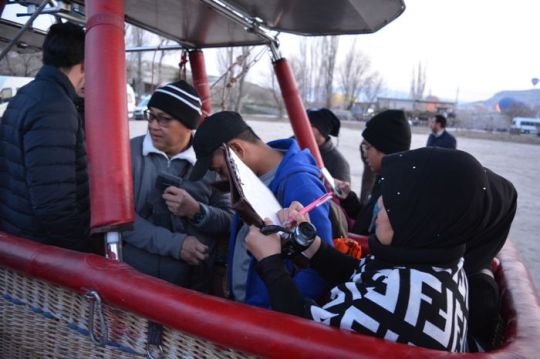
Bulgarian Economic Plans 1958-1980
Transition and Consolidation (1958-1960)
The Third Five Year Plan, spanning 1958-1960, marked the onset of the “great leap forward,” inspired by the Chinese Communists. However, this plan was interrupted in 1960 and seamlessly merged into the subsequent “Fourth” Five Year Plan to align with the General Perspective Twenty Year Plan envisioned by the Eighth Congress of the Bulgarian Communist Party.
A pivotal development during this period was Todor Zhivkov’s 1959 “Thesis,” outlining the theoretical phases of socialism progressing into communism. The initial phase of the Third Plan witnessed the “consolidation” of collective farms (TKZS), reducing their number from 3,290 to 972. An extensive reorganization, mirroring Chinese communes, took place with new administrative districts. Agricultural reforms included a modern inventory with 40,000 tractors and 8,000 combines. A 650-million-ruble Soviet loan was secured on the brink of the Fourth Plan.
Fourth Five Year Plan (1961-1965)
The Fourth Five Year Plan (1961-1965) aligned with the directives of the General Perspective (1961-1980). Key goals included boosting industrial production, machine construction, chemical output, agriculture, livestock breeding, electric power, and steel. The plan aimed to meet consumer demands in food production and light industry. The ambitious vision called for accelerated production, surpassing other “people’s democracies” to achieve comparable economic development by 1980. This implied additional efforts and sacrifices from workers and peasants Guided Istanbul Tour.
General Perspective Plan (1961-1980)
The overarching goals of the General Perspective Plan (1961-1980) included complete nationalization across all economic sectors and erasing distinctions between industrial and agricultural labor forces. The plan aimed to eliminate differences in qualifications, workload, and urban-rural labor. The ultimate objective was to progress from the Socialist principle of distribution (“from everyone according to his ability, to everyone according to his labor”) to the Communist principle (“from everyone according to his ability, to everyone according to his needs”).
Communist planners envisioned economic integration within the Council for Mutual Economic Assistance (COMECON) by 1980. However, achieving this integration would demand more intense exploitation, potentially worsening labor conditions and delaying improvements in the working class’s living standards. These were the vital economic development guidelines set forth by the Eighth Congress of the Bulgarian Communist Party for the future.
0 notes
Photo

A Hub of Education and Luxury Shopping
Education City – Qatar’s International Academic Hub
The government of Qatar has invested significantly in transforming Doha into the education center of the Middle East, notably with the establishment of “Education City.” Encompassing 12,950 square meters in the capital city, Education City hosts students from 60 countries and accommodates 3,000 elementary, middle, and high schools, as well as universities. The city’s commitment to education is further evident in events like the ‘Doha Debates,’ where influential political and academic figures discuss critical issues in the Arab world. Additionally, the Heritage Library, housing 51,000 books, 600 antique maps, 2,000 manuscripts, and 6,000 photographs, aims to become a premier research center in the Middle East.
Glorious Shopping Centers – Doha’s Luxury Retail Experience
In Doha, transportation primarily relies on taxis and rental cars, with buses serving as the main public transportation option. The popular and affordable “karwa” cabs, easily identifiable by their green color, are readily available near malls. While waiting times may vary Guided Tours Turkey, scheduling a cab in advance is advisable. Alternatively, “limo” taxis, often found at upscale hotels, offer a more luxurious but pricier transportation option. Notable shopping destinations include Villaggio, a Venetian-themed mall boasting luxury jewelry stores, renowned Western brands, and even a Venetian canal for boat rides. Aspire Centre’s City Center-Doha, opened in April 2001, stands as Qatar’s largest shopping center, featuring a wide range of products, including jewelry and fragrances. Some malls host ‘family days,’ restricting entry to single men, although exceptions may apply to Western tourists.
0 notes
Photo
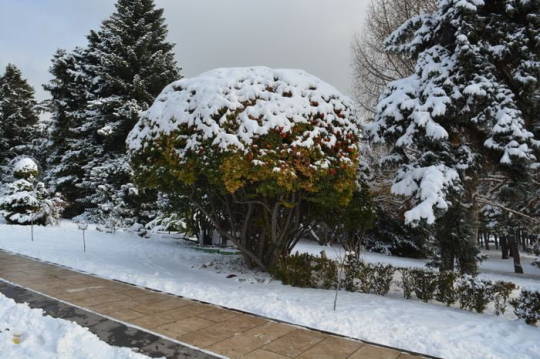
A Hub of Education and Luxury Shopping
Education City – Qatar’s International Academic Hub
The government of Qatar has invested significantly in transforming Doha into the education center of the Middle East, notably with the establishment of “Education City.” Encompassing 12,950 square meters in the capital city, Education City hosts students from 60 countries and accommodates 3,000 elementary, middle, and high schools, as well as universities. The city’s commitment to education is further evident in events like the ‘Doha Debates,’ where influential political and academic figures discuss critical issues in the Arab world. Additionally, the Heritage Library, housing 51,000 books, 600 antique maps, 2,000 manuscripts, and 6,000 photographs, aims to become a premier research center in the Middle East.
Glorious Shopping Centers – Doha’s Luxury Retail Experience
In Doha, transportation primarily relies on taxis and rental cars, with buses serving as the main public transportation option. The popular and affordable “karwa” cabs, easily identifiable by their green color, are readily available near malls. While waiting times may vary Guided Tours Turkey, scheduling a cab in advance is advisable. Alternatively, “limo” taxis, often found at upscale hotels, offer a more luxurious but pricier transportation option. Notable shopping destinations include Villaggio, a Venetian-themed mall boasting luxury jewelry stores, renowned Western brands, and even a Venetian canal for boat rides. Aspire Centre’s City Center-Doha, opened in April 2001, stands as Qatar’s largest shopping center, featuring a wide range of products, including jewelry and fragrances. Some malls host ‘family days,’ restricting entry to single men, although exceptions may apply to Western tourists.
0 notes
Photo
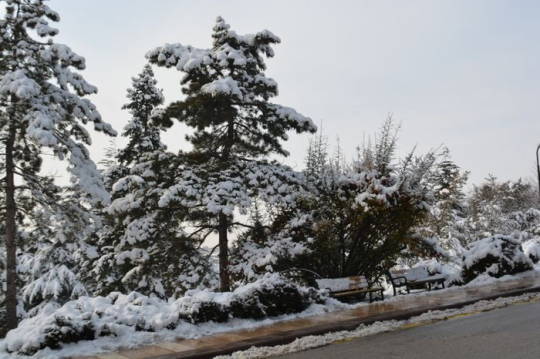
Klissura's Unbearable Restraints
The Suffocating Grip of Oppression
This article delves into the suffocating grip of oppression that descended upon Klissura’s survivors, exploring the absurd regulations and stifling restrictions that further compounded their misery. Trapped within the remnants of their village, the people of Klissura faced a future marred by deprivation and hopelessness.
A Life Confined to Ruins
The survivors of Klissura found themselves shackled by oppressive regulations that dictated every aspect of their lives. Forbidden from seeking employment in other villages or even visiting friends and neighbors, the residents were condemned to a life confined to the ruins of their once-flourishing homes. This restriction not only stifled their opportunities for recovery but also served as a poignant symbol of the arbitrary control wielded by those in power.
The Strangulation of Livelihoods
Klissura was a hub of trade and small-scale commerce, with its residents engaging in winter journeys as far-reaching as Constantinople and Asia Minor. However, the oppressive regulations severed the lifelines of these resilient traders. The ban on leaving the village choked off avenues of income and commerce, pushing the people further into the abyss of poverty, with the impending winter casting a shadow of starvation and cold Tour Bulgaria.
Unanswered Calls for Liberation
The Mudir, recognizing the oppressive nature of these regulations, embarked on a futile quest for liberation. Three times he penned impassioned pleas for permission to allow those desiring to leave the village, to seek better prospects. Yet, his letters met with deafening silence. Similarly, his appeals for authority to reclaim cattle from a neighboring Turkish village echoed into the void, unanswered and ignored.
Winter’s Chill and Desperation
As Klissura braced for winter, the prospects grew dimmer each day. The inhabitants, restricted from seizing opportunities beyond the village borders, faced imminent destitution. The once-thriving community, renowned for its enterprising spirit, now languished in the bitter cold of oppression, its dreams of rebuilding dashed against the rocks of bureaucratic indifference.
Klissura’s Unbroken Spirit Amidst Chains
Klissura’s tale is not merely one of physical destruction but a narrative of dreams shackled and livelihoods strangled. The survivors, resilient in the face of despair, cling to an unbroken spirit that refuses to be extinguished. As the oppressive regulations persist, the international community must amplify its voice, demanding the removal of these chains and restoring to Klissura the freedom to rebuild, trade, and live beyond the ruins that now confine them.
0 notes
Photo
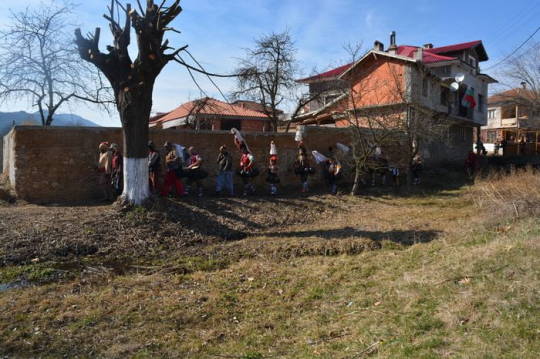
The Troubled Landscape
Avrat-Alan and the Brigands’ Lament
The Brigands’ Bane A Suffering Class in the Shadows
As we continued our journey towards Avrat-Alan, the shadows of the Balkan Mountains embraced us, revealing a narrative of hardship that extended beyond the visible struggles of the villagers. These mountainous regions, once a haven for brigands, now echoed with their discontent. The brigands, predominantly Turks, found themselves on the brink of indigence due to the suspension of all traffic and commerce in the aftermath of the war.
These bandits, while often perceived as criminals, were now painted in a different light—one of desperation. Deprived of their customary means of subsistence, the harsh reality of their circumstances painted a pitiable picture. The cessation of travel and trade had not only silenced the roads but also left the brigands grappling with destitution. As we navigated the challenging terrain, it became apparent that the economic fallout had reached even those on the fringes of society, urging a nuanced consideration of the multifaceted impacts of conflict.
Echoes of Insurrection in a Mountain Hollow
As the sun dipped towards the horizon, we stood at the mountain’s crest, gazing upon Avrat-Alan nestled in a deep, narrow valley below. This village, one of the few south of the Balkans where an attempt at insurrection had occurred, bore the weight of a complex history. While it lacked the fortifications seen in some other places, Avrat-Alan held a distinction as the principal offender, marked by acts that strained the moral fabric of the insurrection.
The most egregious offense lay in the killing of forty Mohammedan gipsies by the insurgent youth. These gipsies, suspected of clandestine arming and potential allegiance to the Bashi-Bazouks, met a tragic fate. The suspicions, though unconfirmed Bulgaria Holidays, led to a grave decision, highlighting the intensity and paranoia that had gripped the region during the insurrection. However, a critical distinction emerged—the insurgents, despite their transgressions, refrained from harming women and children. This singular fact underscored a profound difference in conduct between the Bulgarian rebels and their Turkish counterparts.
The legacy of Avrat-Alan stood as a stark reminder of the moral complexities that emerged in the crucible of insurrection. It beckoned forth a call for reflection on the harsh choices made under the pressures of war, illuminating the contrasting values upheld by the opposing factions and, by extension, the deep-seated animosities embedded in the historical tapestry of the region.
0 notes
Photo
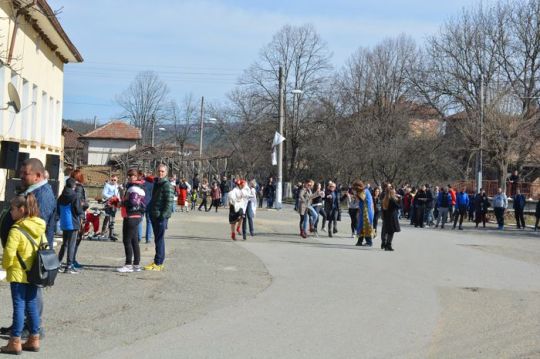
Any ornaments and jewels
We have talked with many women who had passed through all parts of the ordeal but the last, and the procedure seems to have been as follows: They would seize a woman, strip her carefully to her chemise, laying aside articles of clothing that were valuable, with any ornaments and jewels she might have about her. Then as many of them as cared would violate her, and the last man would kill her or not as the humour took him.
At the next house a man stopped us to show where a blind little brother had been burnt alive, and the spot where he had found his calcined bones, and the rough, hard-visaged man sat down and sobbed like a child. The foolish fellow did not seem to understand that the poor blind boy was better off now, and that he ought really to have thanked the Turks instead of crying about it.
On the other side of the way were the skeletons of two children lying side by side, partly covered with stones, and with frightful sabre cuts in their little skulls. . The number of children killed in these massacres is something enormous. They were often spitted on bayonets, and we have several stories from eye-witnesses who saw little babes carried about the streets, both here and at Otluk-kui, on the point of bayonets Guided Istanbul Tour.
Batak the Bashi-Bazouks
The reason is simple. When a Mahometan has killed a certain number of infidels, he is sure of Paradise, no matter what his sins may be. Mahomet probably intended that only armed men should count, but the ordinary Mussulman takes the precept in broader acceptation, and counts women and children as well. Here in Batak the Bashi-Bazouks, in order to swell the count, ripped open pregnant women, and killed the unborn infants. As we approached the middle of the town, bones, skeletons, and skulls became more numerous.
There was not a house beneath the ruins of which we did not perceive human remains, and the street besides was strewn with them. Before many of the doorways women were walking up and down wailing their funeral chant. One of them caught me by the arm and led me inside of the walls, and there in one corner, half covered with stones and mortar, were the remains of another young girl, with her long hair flowing wildly about among the stones and dust.
0 notes
Photo
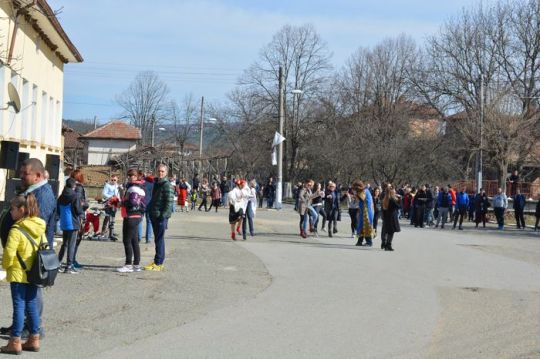
Any ornaments and jewels
We have talked with many women who had passed through all parts of the ordeal but the last, and the procedure seems to have been as follows: They would seize a woman, strip her carefully to her chemise, laying aside articles of clothing that were valuable, with any ornaments and jewels she might have about her. Then as many of them as cared would violate her, and the last man would kill her or not as the humour took him.
At the next house a man stopped us to show where a blind little brother had been burnt alive, and the spot where he had found his calcined bones, and the rough, hard-visaged man sat down and sobbed like a child. The foolish fellow did not seem to understand that the poor blind boy was better off now, and that he ought really to have thanked the Turks instead of crying about it.
On the other side of the way were the skeletons of two children lying side by side, partly covered with stones, and with frightful sabre cuts in their little skulls. . The number of children killed in these massacres is something enormous. They were often spitted on bayonets, and we have several stories from eye-witnesses who saw little babes carried about the streets, both here and at Otluk-kui, on the point of bayonets Guided Istanbul Tour.
Batak the Bashi-Bazouks
The reason is simple. When a Mahometan has killed a certain number of infidels, he is sure of Paradise, no matter what his sins may be. Mahomet probably intended that only armed men should count, but the ordinary Mussulman takes the precept in broader acceptation, and counts women and children as well. Here in Batak the Bashi-Bazouks, in order to swell the count, ripped open pregnant women, and killed the unborn infants. As we approached the middle of the town, bones, skeletons, and skulls became more numerous.
There was not a house beneath the ruins of which we did not perceive human remains, and the street besides was strewn with them. Before many of the doorways women were walking up and down wailing their funeral chant. One of them caught me by the arm and led me inside of the walls, and there in one corner, half covered with stones and mortar, were the remains of another young girl, with her long hair flowing wildly about among the stones and dust.
0 notes
Photo
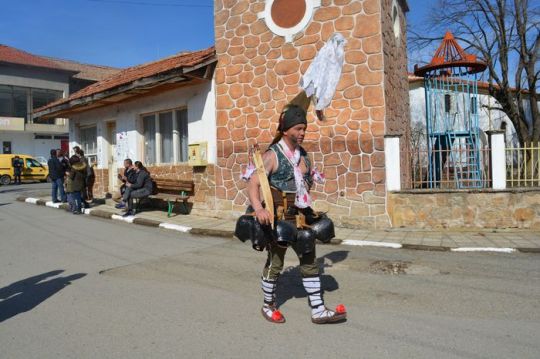
Mudir of Otluk-kui
There is no pity in the breasts of these savages. Then, fainting, insensible, she was thrown into a cart and sent off to Philippopolis, thrown into prison there, and kept on bread and water until the arrival of Mr. Schuyler. Then she was set at liberty, ill, shattered in health, and brokenhearted.
We saw this same Mudir of Otluk-kui when we were there. Mr. Baring spoke of him as the most filthy brute he ever saw. The very night Mr. Baring was there, the Mudir, as if in very contempt for his presence in the place, sent for two young married women, whose husbands had been killed in the massacre, to come to his house. They refused. The next night, when Mr. Schuyler was there, he again sent for them, and they again refused ; but they came to Mr. Schuyler next day in despair, saying they felt sure that as soon as we left the village he would send his zaptiehs for them. When Mr. Schuyler spoke to the Governor of Philippopolis about this Mudir, he simply replied that he knew he was a bad man, but he had no better man to put in his place City Tours Istanbul.
This man will not be punished, nor will Achmet Aga, the destroyer of Batak, nor another Achmet Aga, equally infamous, who destroyed Perustltza; nor Tossum Bey, who burnt Klissura; nor Ohefket Pacha, who, beaten as a general in Bosnia and Herzegovina, wreaked his vengeance on the unresisting people of Bazardjik, where his generalship had full scope.
These men have, on the contrary, been rewarded, decorated, and promoted. And we can do nothing; I am sure nothing will be done. Diplomacy is impotent. If Sir Henry Elliot remains in Constantinople he will make a few mild representations to the Porte, which the latter will receive with the best possible grace, and—that is all. How could it be otherwise? Sir Henry does not believe in the atrocities. How can he be expected to make strong representations on the subject?
0 notes